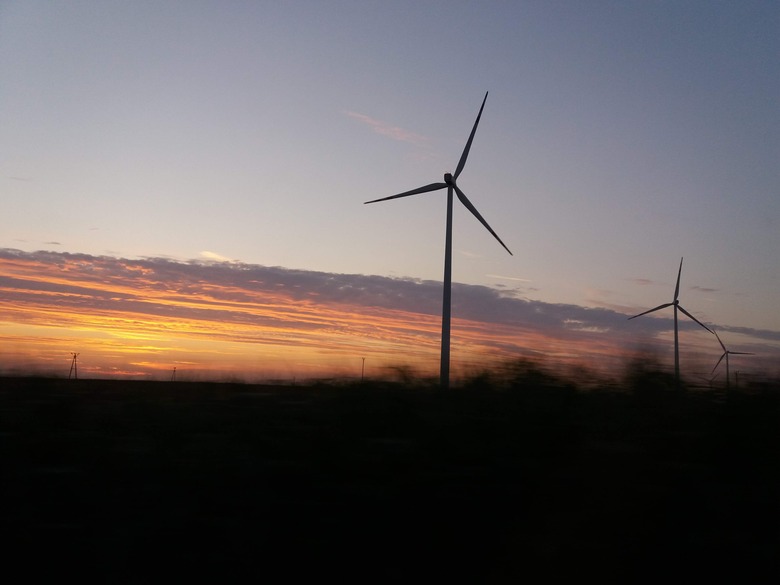How Are Winds Formed?
Just about every wind on Earth can be traced in cause back to the Sun. As the Sun unevenly heats the surface of the Earth, air rises and sinks, resulting in high and low regions of air pressure. As air rises, the pressure lowers and surrounding air moves in to replace it, causing wind. The more the pressure changes over a given distance, usually the faster the wind will be. This is called pressure gradient force. If there is a large pressure difference between two points that are far away, the wind speeds will be lower than if those locations are closer together.
Most wind moves horizontally, that is across the ground. There isn't usually that much wind moving up and down, except for in thunderstorm downdrafts. Usually, vertical winds are less than one mile per hour. This is all because of gravity, which is a driving force in controlling the vertical movement of air. A more significant force affecting wind patterns, though, is the Coriolis force. Because of the Earth's rotation, objects, including planes, birds, and missiles, are deflected from a straight line. The wind is no exception and is deflected to the right in the Northern Hemisphere and to the left in the Southern Hemisphere. The magnitude of the deflection is the least by the equator and the greatest around the poles.
Other forces affect the behavior of winds as well. A commonly known one, friction, is a strong influence over winds near the ground. Friction always acts in opposition to the wind velocity and the flow of air in general. This also reduces the effects of the Coriolis force, and the atmosphere adjusts to that by turning the wind toward low pressure. The Coriolis force and friction combined, and balanced with the horizontal pressure gradient force, cause a balance in the atmosphere that explains the spiraling motion, instead of a straight inward or outward motion, around low- and high-pressure systems.
With winds directed toward low pressure and the fact that air rises in a low-pressure area, stormy weather results as water reaches its condensation point in the atmosphere. Clouds and precipitation are the result. Also, with temperature changes directly affecting pressure, a large change in temperature can also generate wind. Jet streams are areas of higher winds in the atmosphere. They travel across whole continents, fed by the differences between warm and cold air masses. These atmospheric winds are also the driving force in moving storms from west to east.
Cite This Article
MLA
Kirmayer, Andy. "How Are Winds Formed?" sciencing.com, https://www.sciencing.com/winds-formed-5145233/. 22 November 2019.
APA
Kirmayer, Andy. (2019, November 22). How Are Winds Formed?. sciencing.com. Retrieved from https://www.sciencing.com/winds-formed-5145233/
Chicago
Kirmayer, Andy. How Are Winds Formed? last modified March 24, 2022. https://www.sciencing.com/winds-formed-5145233/
